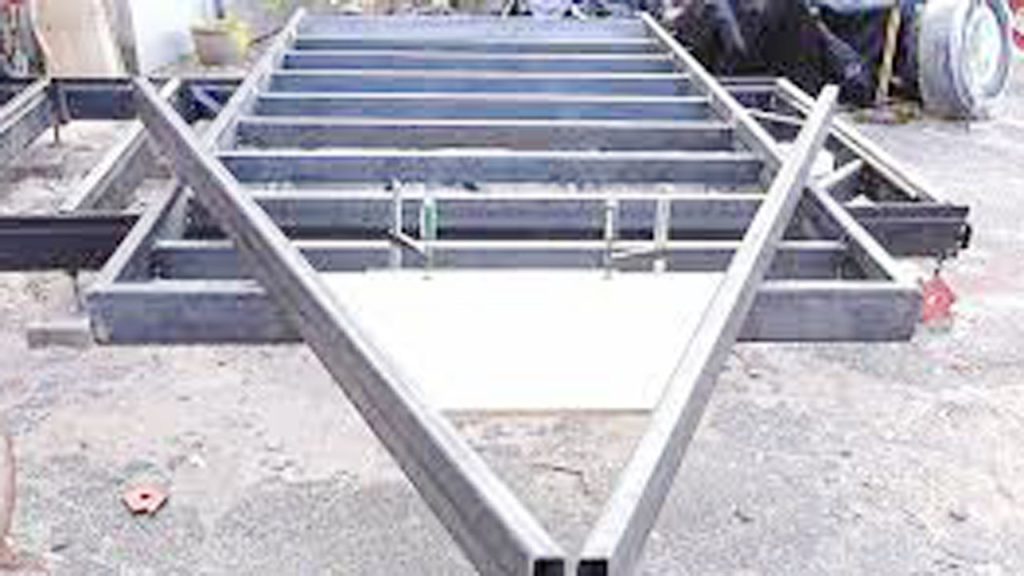Have you ever thought about making your own ultrasonic welding machine? I know it sounds like something out of a high-tech lab, but with the right approach, you can actually create one yourself. Ultrasonic welding is a fascinating technology that uses sound waves to bond materials like plastics and metals without needing adhesives, screws, or solder.
Building your own ultrasonic welder is not just a cost-effective alternative to buying one—it’s also an incredibly rewarding experience.
I’m here to guide you through the entire process, step by step, in a way that’s easy to follow, even if you’re new to electronics and machinery.

Image by hackaday
What Exactly Is Ultrasonic Welding?
Ultrasonic welding is a method of joining two materials by applying high-frequency ultrasonic vibrations under pressure. These vibrations generate heat at the contact points of the materials, which causes them to melt and fuse together.
It’s widely used in industries like:
- Automotive: To join plastic parts in cars.
- Medical: For bonding delicate components in medical devices.
- Electronics: To create precise connections in gadgets.
Unlike traditional welding, ultrasonic welding doesn’t require additional materials or high temperatures, making it cleaner, faster, and more efficient.
Why Build Your Own Ultrasonic Welding Machine?
There are several compelling reasons to embark on this project:
Save Money: Commercial ultrasonic welding machines can cost thousands of dollars. Building one yourself can cost under $500, depending on the components.
Personalization: You can customize your machine to suit your specific welding needs.
Learning Experience: The process teaches you valuable skills in electronics, mechanics, and problem-solving.
Fun and Satisfaction: Creating something functional with your own hands is an incredible feeling!
Tools and Materials You’ll Need
Before starting, you’ll need to gather some tools and materials. Here’s what you’ll need:
Tools:
- Soldering iron and solder
- Multimeter for checking connections
- Oscilloscope (optional but useful for tuning frequencies)
- Drill and bits for assembling parts
- Screwdrivers and wrenches
Materials:
- Piezoelectric transducer: The core component that converts electrical energy into ultrasonic vibrations.
- Ultrasonic generator circuit: Generates the high-frequency signal needed for welding.
- Horn (or sonotrode): Transfers ultrasonic vibrations to the material.
- Power supply: A high-frequency supply compatible with your transducer.
- Heat sink: To prevent overheating during operation.
- Metal or plastic enclosure: Protects the internal components.
Most of these components are available online or at specialized electronics stores. Make sure to select parts that are compatible with each other, especially the transducer and generator.
Step-by-Step Guide to Building an Ultrasonic Welding Machine
Let’s go through the process in detail to make it manageable and enjoyable.
Step 1: Understand the Fundamentals
Before you start assembling, it’s important to understand how the machine works. Here’s a simplified explanation:
- The ultrasonic generator converts electrical power into high-frequency energy (typically 20 kHz to 40 kHz).
- This energy is sent to the transducer, which turns it into mechanical vibrations.
- The horn amplifies these vibrations and focuses them on the welding point.
- Pressure and heat at the contact point cause the materials to bond.
Step 2: Design or Acquire a Generator Circuit
The generator circuit is the brain of your machine. If you’re confident in electronics, you can design one yourself. Otherwise, purchase a pre-assembled ultrasonic generator circuit. Ensure that it matches the frequency of your transducer, as this is crucial for proper functioning.
Step 3: Install the Transducer
Mount the piezoelectric transducer securely in the housing. Proper alignment is key to achieving efficient energy transfer. You can use screws or a bracket to fix it in place.
Step 4: Attach the Horn (Sonotrode)
The horn amplifies and directs the ultrasonic vibrations. Choose a horn material (usually titanium or aluminum) based on the type of materials you’ll be welding. Attach it firmly to the transducer to minimize energy loss.
Step 5: Add Cooling Mechanisms
Ultrasonic welding generates heat, which can damage components if not managed. Install a heat sink near the generator and transducer to dissipate excess heat. If you’re planning to use the machine for extended periods, consider adding a small cooling fan.
Step 6: Assemble the Housing
Create an enclosure for your machine using sturdy materials like metal or hard plastic. This protects the internal components and gives your machine a professional look. Ensure the housing has ventilation slots to prevent overheating.
Step 7: Connect the Power Supply
Your power supply should match the voltage and frequency requirements of the generator. A common choice is a high-frequency AC supply, but ensure it’s compatible with the transducer.
Step 8: Calibrate the Machine
Testing and calibration are crucial to ensure everything works smoothly. Use a multimeter or an oscilloscope to measure the frequency and amplitude of the ultrasonic waves. Fine-tune the system until the generator and transducer are perfectly synchronized.
Step 9: Perform Trial Welds
Now, it’s time to test your creation! Start with simple materials like thin plastic sheets or soft metals. Adjust the pressure, duration, and amplitude settings until you achieve clean and strong welds.
Challenges and How to Overcome Them
- Frequency Mismatch: Ensure your generator and transducer operate at the same frequency. A mismatch can lead to inefficiency or failure.
- Overheating: Install effective cooling solutions, such as heat sinks or fans, to protect your components.
- Material Compatibility: Ultrasonic welding doesn’t work with all materials. Check if the materials you want to weld are suitable for this process.
DIY vs Commercial Ultrasonic Welders
| Aspect | DIY Machine | Commercial Machine |
|---|---|---|
| Cost | $300 – $500 | $5,000 – $20,000 |
| Customization | Fully customizable | Limited options |
| Technical Skill | Requires moderate knowledge | Minimal |
| Applications | Small-scale projects | Industrial-level production |
| Durability | Depends on components | Highly durable |
For hobbyists or small-scale applications, a DIY ultrasonic welder is a practical choice. If you need industrial-grade performance, investing in a commercial machine may be the better option.
FAQs
What frequency should I use for ultrasonic welding?
Most ultrasonic welders operate at frequencies between 20 kHz and 40 kHz. Choose a frequency based on the materials and application.
Can I weld all types of plastics?
No, only certain plastics, like thermoplastics, are suitable for ultrasonic welding. Materials like PVC and nylon work well.
How can I test if my ultrasonic welding machine works?
Perform a trial weld on compatible materials. If they bond cleanly without residue or distortion, your machine is functioning correctly.
Is it safe to use a DIY ultrasonic welding machine?
Yes, as long as you follow safety precautions, such as wearing protective gear and ensuring proper insulation of electrical components.
Conclusion
Building your own ultrasonic welding machine is an exciting and cost-effective way to explore this innovative technology. While it takes time, patience, and attention to detail, the result is a machine that you can proudly call your own.
If you’re a hobbyist looking to save money or someone eager to learn about ultrasonic technology, this project offers endless rewards. With the steps outlined in this guide, you’re well on your way to creating a functional ultrasonic welding machine.
Now, roll up your sleeves, gather your tools, and get started. Trust me, the sense of accomplishment you’ll feel when your machine successfully welds its first piece is unmatched.

Endow Russel the owner chief editor of giftendow.com . I am a mechanical engineer and assign to an local firm with much experience in welding and industrial equipment.

